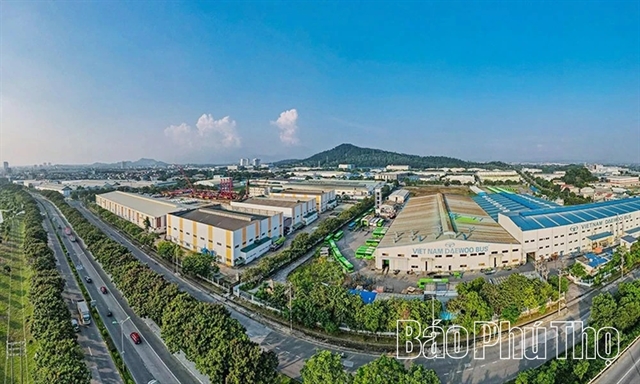 Society
Society

HCM City plans to move electrical and telecommunication utility boxes underground in an effort to improve safety and the city’s beauty.
 |
| Electrical cables are buried along Đề Thám Street in HCM City’s District 1. — VNA/VNS Photo Hữu Khoa |
HCM CITY — HCM City plans to move electrical and telecommunication utility boxes underground in an effort to improve safety and the city’s beauty.
At a recent meeting held by the District 1 People’s Committee, local departments and agencies discussed how to rearrange the city’s electrical and telecom cabinets along sidewalks on main city streets.
Many power and telecom cables have been placed underground on main streets in the city centre.
However, many electrical and telecommunication boxes and transformer stations still exist on sidewalks, obstructing the view of pedestrians and affecting the landscape.
People often dispose of their rubbish behind or near electrical and telecom boxes near schools.
Experts have suggested that the city’s Department of Transport should temporarily stop issuing licences for electrical and telecom works unless the electrical boxes are located underground.
The proposal, however, is considered controversial and has not received the approval of agencies.
Luân Quốc Hưng, head of the Technical Committee under the HCM City Power Corporation (EVN HCMC) in District 1, said the removal of electrical and telecommunication cables underground was a top priority in the downtown area.
However, many old electrical utility boxes still exist on sidewalks.
The power sector is gradually replacing the old boxes with new, smaller ones at suitable locations.
Nguyễn Phú Vĩnh, director of Sài Gòn Power Company, a branch of EVN HCM City, said the company would replace all old electrical boxes. It has already installed some transformer stations called Ring Man Unit (RMU) electrical cabinets.
“We also have replaced low-voltage distribution boxes with new, smaller ones, and worked with districts to install them in public green spaces where they will not affect pedestrians,” Vĩnh said.
Currently, District 3 is upgrading pavements along Điện Biên Phủ Street to make way for more green grass areas.
New electrical utility boxes will be placed in these areas. The bases of the new boxes will be covered with marble instead of being erected on a concrete pole.
Officials of EVN HCMC have submitted all of their proposals to the city’s leaders.
Underground electrical grids and telecom cables must comply with standard regulations on design, materials and equipment, urban management and transport infrastructure, and safety regulations in the electrical sector.
Vĩnh said installing an electrical box requires a multi-step process, including planning, survey and negotiation, and consulting by infrastructure management agencies and residents. Agencies then have to evaluate the plans.
“Many people support this idea,” he said.
Phạm Quốc Bảo, deputy general director of EVN HCMC, said that flooding in the city had made it more difficult to put the electrical boxes underground.
State regulations on design and safety only allow underground cables, not underground equipment, such as electrical boxes and transformer stations.
"However, the power sector is researching the design of electrical boxes and transformer stations," he said.
Nguyễn Ngọc Khanh, deputy director of the city’s Nam Power Projects Management Board, said that since the beginning of the year, the unit had installed nearly 400 RMU boxes and 2,500 low-voltage electrical cabinets.
Thanks to public consultation and local authorities’ support, residents agreed with the implementation.
These compact boxes with beautiful design do not occupy spaces on sidewalks, are easy to handle when there are problems, and help to reduce the duration of power cuts.
Vĩnh said the power sector had also piloted using Graffgo paint to cover the electrical boxes on Phạm Ngọc Thạch Street in District 1.
"Graffgo is a special type of paint that protects all surfaces against types of graffiti and classified advertisements. We will use this soon in districts 1 and 3 to ensure the beauty of the streets," he said. — VNS




